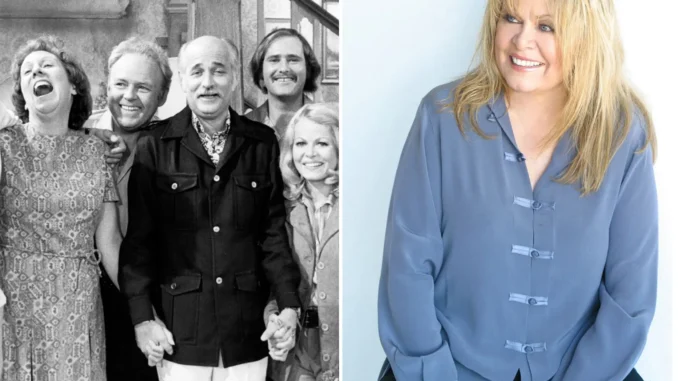
Norman Lear and Sally Struthers look back as ‘All in the Family’ turns 53
In January 1971, “All in the Family” stormed onto America’s TV screens — blowing a collective raspberry at network complacency and lobbing a grenade into prime time.
The show’s blustery lead character, Archie Bunker, soon became a rallying point for a politically polarized country turning a mirror on itself through laughter, anger and outrage.
Television would never be the same.

“We didn’t know Archie Bunker, but we felt we did,” series creator Norman Lear, 98, told The Post on the show’s 50th anniversary. “He was so American, but a specific type of American . . .There was an Archie Bunker that lived next door to me, and my father had a little bit of Archie in him — he would say ‘Jeanette, stifle!’ to my mother. If you didn’t live with Archie, he was up the street, down the street or across the street.
“The fact that he was on television was a surprise — but it wasn’t like we didn’t know him.”
The CBS sitcom, based on the British TV hit “Till Death Us Do Part,” was originally intended for ABC. Several people, including Jackie Gleason and Mickey Rooney, were considered for the lead role. (Rooney turned it down, saying it was was “un-American.”) Archie Bunker (Carroll O’Connor), dubbed “the lovable bigot,” was a loading-dock foreman living in a Queens row house with his quavery-voiced “dingbat” wife Edith (Jean Stapleton), adored “little girl” daughter Gloria (Sally Struthers) and her liberal, hippy-ish husband, college student Mike Stivic (Rob Reiner) — who Archie referred to as “Meathead.”

That was tame compared to the shocking ethnic and racial slurs that flew from Archie’s mouth. But the public lapped it up, and CBS had a huge hit on its hands. “All in the Family” was TV’s top-rated show for five consecutive seasons, at its height reaching more than 30 million viewers a week in those pre-streaming, three-network days.
“It shows you that very little has changed,” Struthers, 73, told The Post. “If you took a recording of an [‘All in the Family’] episode . . . and just heard the audio, especially where there’s a discussion or argument about politics, if the names being shouted by Mike and Archie were removed — and you inserted the names of politicians today — all of the arguments still hold up.
“It sounds silly now, in this day and age of ‘everything goes’ . . . but at that time, a married couple had never slept in the same bed before, a toilet had never been audibly flushed before,” she said, alluding to a particularly memorable scene with Archie. “People had never sat at the table in anything but their best clothes and their perfect manners. We broke all the taboos — they lived like real people and hadn’t been portrayed like that on any television series.

“They were lower socioeconomic real people living their lives and loving each other and arguing — and reaching over one another at the table for food.”
Native New Yorkers O’Connor and Stapleton were 46 and 48 when the series premiered; Reiner and Struthers were both 23. None of them knew how much “All in the Family” would forever change their lives.
“I was very young and certainly had no crystal ball — I had just been let go from ‘The Tim Conway Comedy Hour’. . . when I went to read for [the role of Gloria] for this man named Norman Lear,” said Struthers, who won two Emmys for her portrayal. “I had laryngitis, and they handed me a yelling scene to do. I’m sure that’s why he remembered me . . . It was just another job. There was no way to know what it was to become.”

Struthers recalled how John Rich, who directed that first episode, told the cast, as they left rehearsals to head home and watch the premiere, that CBS had staffed its affiliates nationwide with extra operators to take angry phone calls. “He said, ‘So please show up tomorrow morning but be prepared for all of us to be out of a job.’ When we came in the next morning, he told us that, yes, the affiliates received more phone calls than they’d ever received before — but that the majority of [the calls] were gleeful and exciting, with people asking, ‘What was that?’ ‘Is it coming back?’ “
